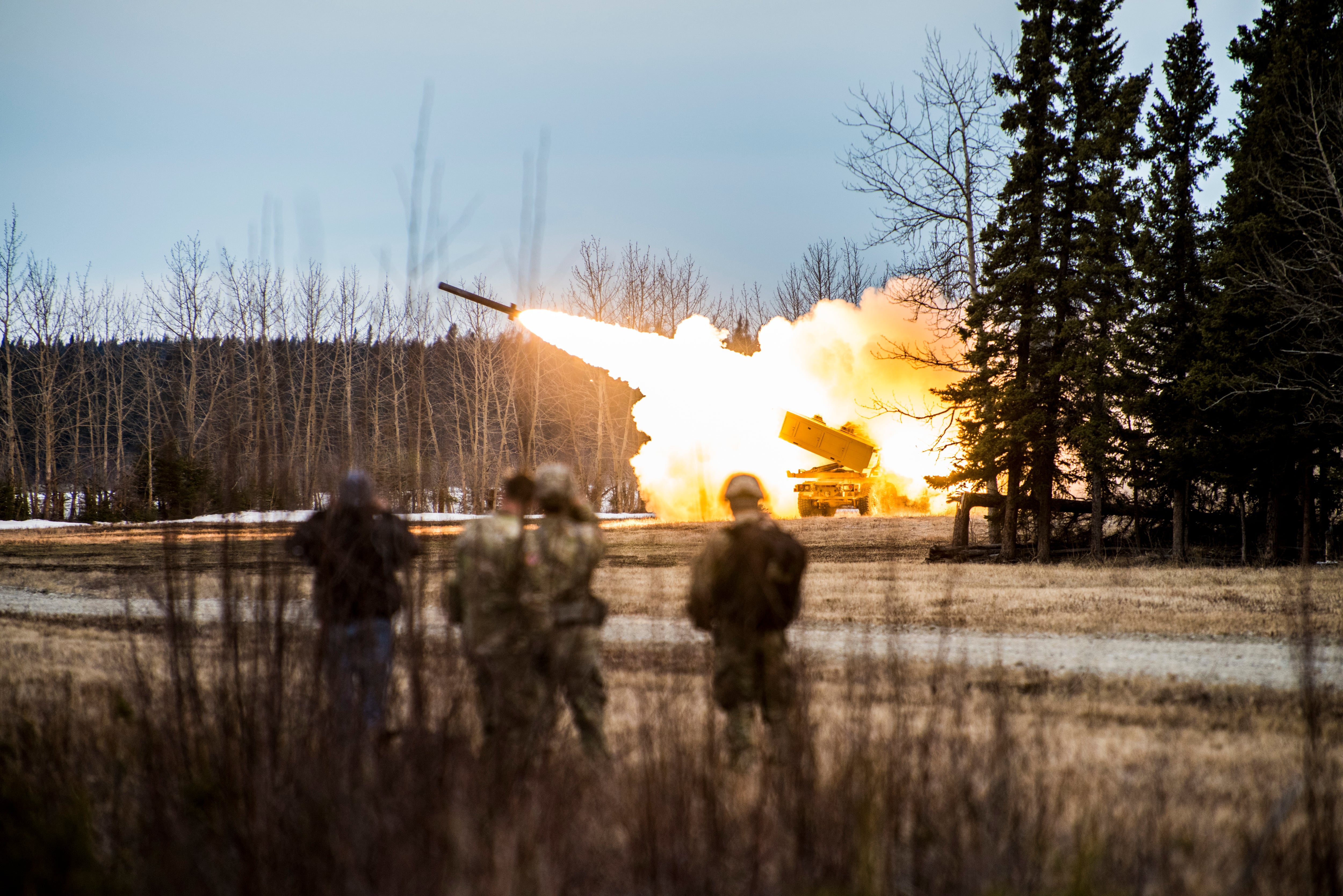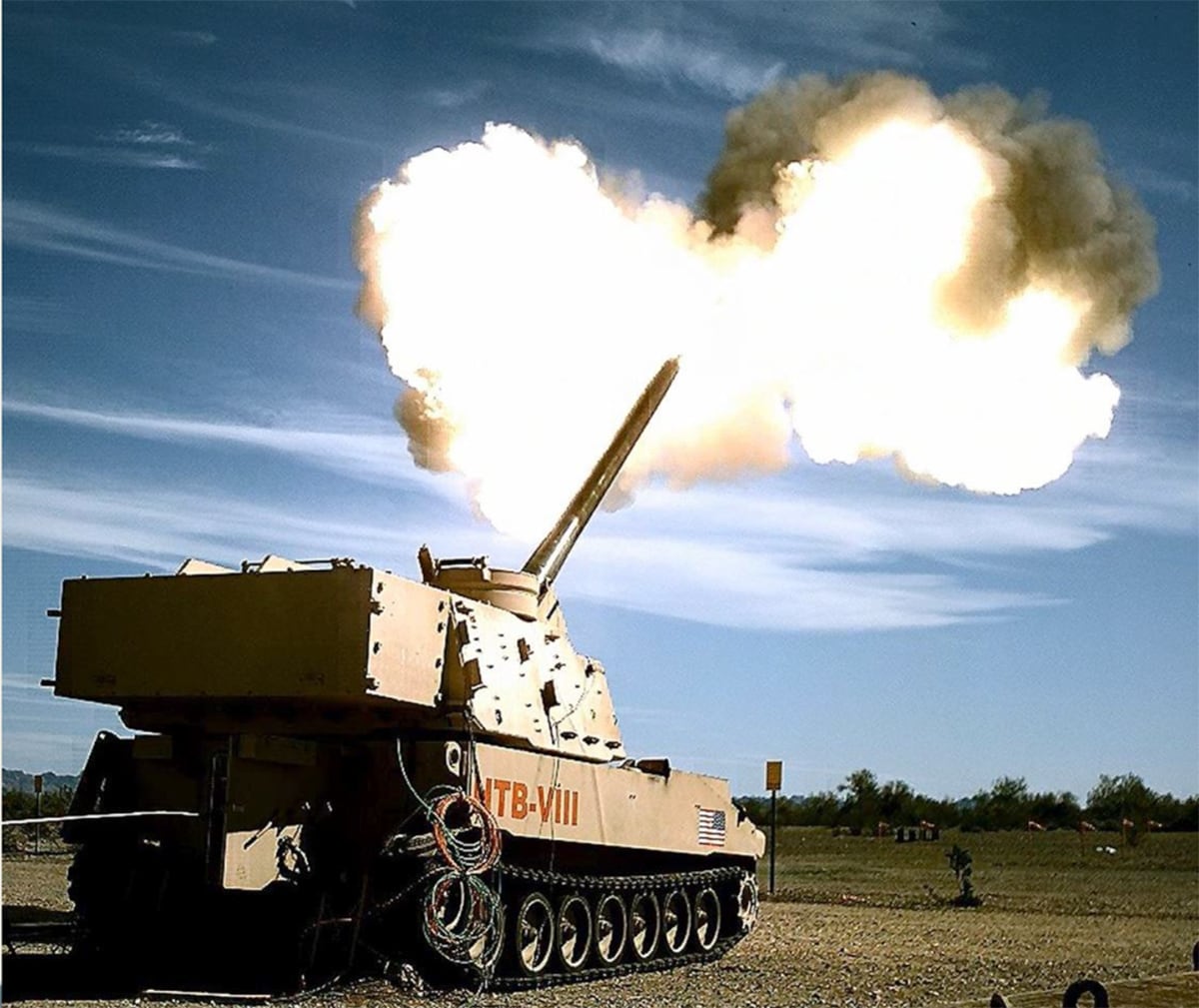WASHINGTON — The U.S. Army took two shots from its Extended Range Cannon Artillery system, which both reached 65 kilometers in range and hit their intended targets, in a demonstration at Yuma Proving Ground, Arizona, on March 6, according to Brig. Gen. John Rafferty, who is in charge of long-range precision fires modernization, the Army’s top priority.
The demonstration proves the cannon is capable of firing roughly 40 miles, which is about the distance between Washington, D.C., and Annapolis, Maryland. The capability would also benefit the service should it face near-peer adversaries on the battlefield.
It is unclear whether the Army was pushing its shots out to the maximum range of capability or if the projectiles are capable of reaching farther ranges.
RELATED

A long-range cannon is intended to give the service a desired level of standoff outside of the range of enemy artillery, where it can destroy those threats and open up windows of opportunity to advance on the enemy in highly contested environments.
The Army’s Long-Range Precision Fires Cross-Functional Team under Army Futures Command has made the ERCA system development one of its centerpiece priorities over the past several years.
In 2018, the service was able to double the range of cannon artillery using a modified M777 howitzer by adding a supercharged propellant and the XM1113 rocket-assisted projectile, which takes a 155mm artillery round and extends the cannon range to more than 60 kilometers by providing rocket-assist capability.
In the demonstration at Yuma, the Army fired — from a 58-caliber, 30-foot gun tube — a Raytheon-made Excalibur extended-range guided artillery shell and an XM1113 using supercharged propellant.
RELATED

The ERCA system in the demonstration — called the XM1299 prototype zero — was integrated by BAE Systems, the manufacturer of the M109A7 Paladin Integrated Management (PIM) howitzer.
BAE Systems received an Army contract less than a year ago in July 2019 to integrate the Army-developed cannon onto the PIM howitzer chassis, and the company will make the first 18 prototypes..
The Army will hold an industry day for ERCA’s second increment in the next three to four months once the acquisition strategy is approved by Army leadership, Rafferty said during a media roundtable following the demonstration. After the industry day, the Army will be able to discuss more publicly its business relationship going into the second prototyping phase, he added.
The near-term objective on the program is to deliver approximately six batteries of the towed howitzer capabilities to be used in the field. The Army plans to begin fielding the ERCA cannon in fiscal 2023.
The ERCA cannon is a step ahead of a bigger program to develop a strategic, long-range cannon that could shoot 1,000 nautical miles, or 1,852 kilometers.
Jen Judson is an award-winning journalist covering land warfare for Defense News. She has also worked for Politico and Inside Defense. She holds a Master of Science degree in journalism from Boston University and a Bachelor of Arts degree from Kenyon College.








